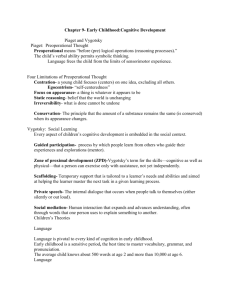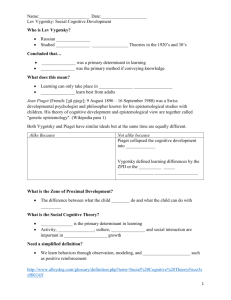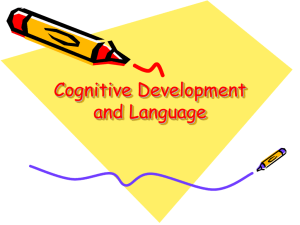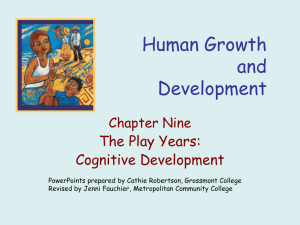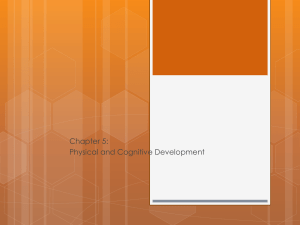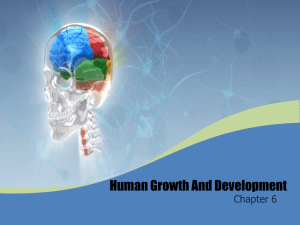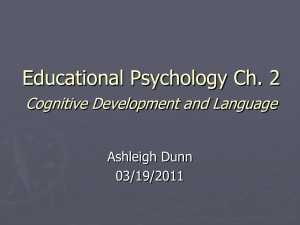Educational Psychology Quiz #1: Development & Cognition
advertisement
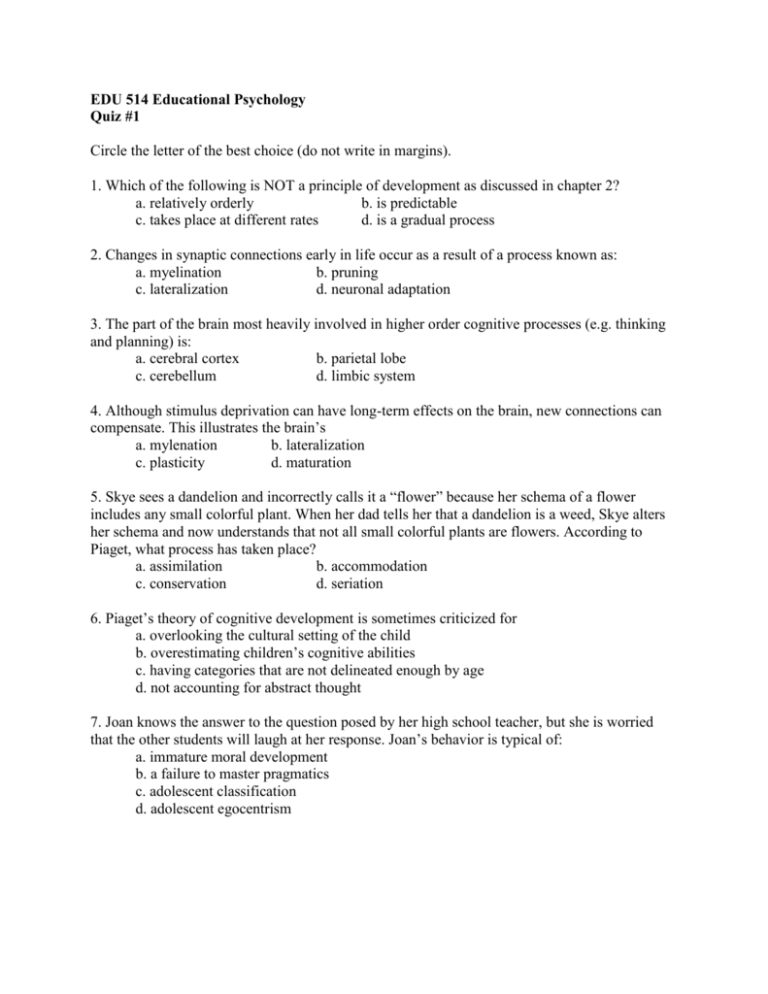
EDU 514 Educational Psychology Quiz #1 Circle the letter of the best choice (do not write in margins). 1. Which of the following is NOT a principle of development as discussed in chapter 2? a. relatively orderly b. is predictable c. takes place at different rates d. is a gradual process 2. Changes in synaptic connections early in life occur as a result of a process known as: a. myelination b. pruning c. lateralization d. neuronal adaptation 3. The part of the brain most heavily involved in higher order cognitive processes (e.g. thinking and planning) is: a. cerebral cortex b. parietal lobe c. cerebellum d. limbic system 4. Although stimulus deprivation can have long-term effects on the brain, new connections can compensate. This illustrates the brain’s a. mylenation b. lateralization c. plasticity d. maturation 5. Skye sees a dandelion and incorrectly calls it a “flower” because her schema of a flower includes any small colorful plant. When her dad tells her that a dandelion is a weed, Skye alters her schema and now understands that not all small colorful plants are flowers. According to Piaget, what process has taken place? a. assimilation b. accommodation c. conservation d. seriation 6. Piaget’s theory of cognitive development is sometimes criticized for a. overlooking the cultural setting of the child b. overestimating children’s cognitive abilities c. having categories that are not delineated enough by age d. not accounting for abstract thought 7. Joan knows the answer to the question posed by her high school teacher, but she is worried that the other students will laugh at her response. Joan’s behavior is typical of: a. immature moral development b. a failure to master pragmatics c. adolescent classification d. adolescent egocentrism 8. A preoperational child’s belief that a tall, narrow glass contains more liquid than a short, wide glass is probably due to difficulties in a. decentering. b. egocentrism c. seriation. d. object permanence. 9. Janie was having some difficulty deciding how to organize her defense for the debate competition. She prepared several hypothetical arguments that her opponents might raise, and how she might reply. What cognitive stage of Piaget’s theory does this account best illustrate? a. concrete operations b. formal operations c. preoperational thought d. sensorimotor 10. According to Vygotsky, scaffolding represents a. a barrier or a block to solving a problem. b. a plateau that children reach before progressing to a new stage. c. artificial support, such as notes, on which children can rely while learning. d. external support for helping children solve problems on their own. 11. According to Vygotsky, children use private speech to: a. regulate their behavior b. alleviate confusion c. organize their thinking d. all of the above 12. True or False. Vygotsky emphasized the importance of a teacher insisting on total silence when young students are working on difficult problems. a. true b. false 13. Application of Vygotsky’s zone of proximal development concept would include a. making new tasks slightly beyond the student’s current level of ability b. not introducing new tasks until prerequisite tasks are satisfactorily mastered c. requiring the student to work completely independently, regardless of success or failure d. using highly structured materials to introduce new content rather than semistructured tasks 14. Generally, students are not ready to study the rules of a language formally until about age five. This is when most students have started to gain a. literacy b. metalinguistic awareness c. semantic speech d. syntax 15. Johnny is upset because his sister Amy got a larger slice of pizza. Johnny’s father then cuts his slice into several smaller pieces. Now Johnny is happy because he “more pizza than Amy.” Johnny is most likely in which of the following cognitive stages? (Piaget’s theory) a. concrete operations b. formal operational thought c. preoperational thought d. pre-motor thought
